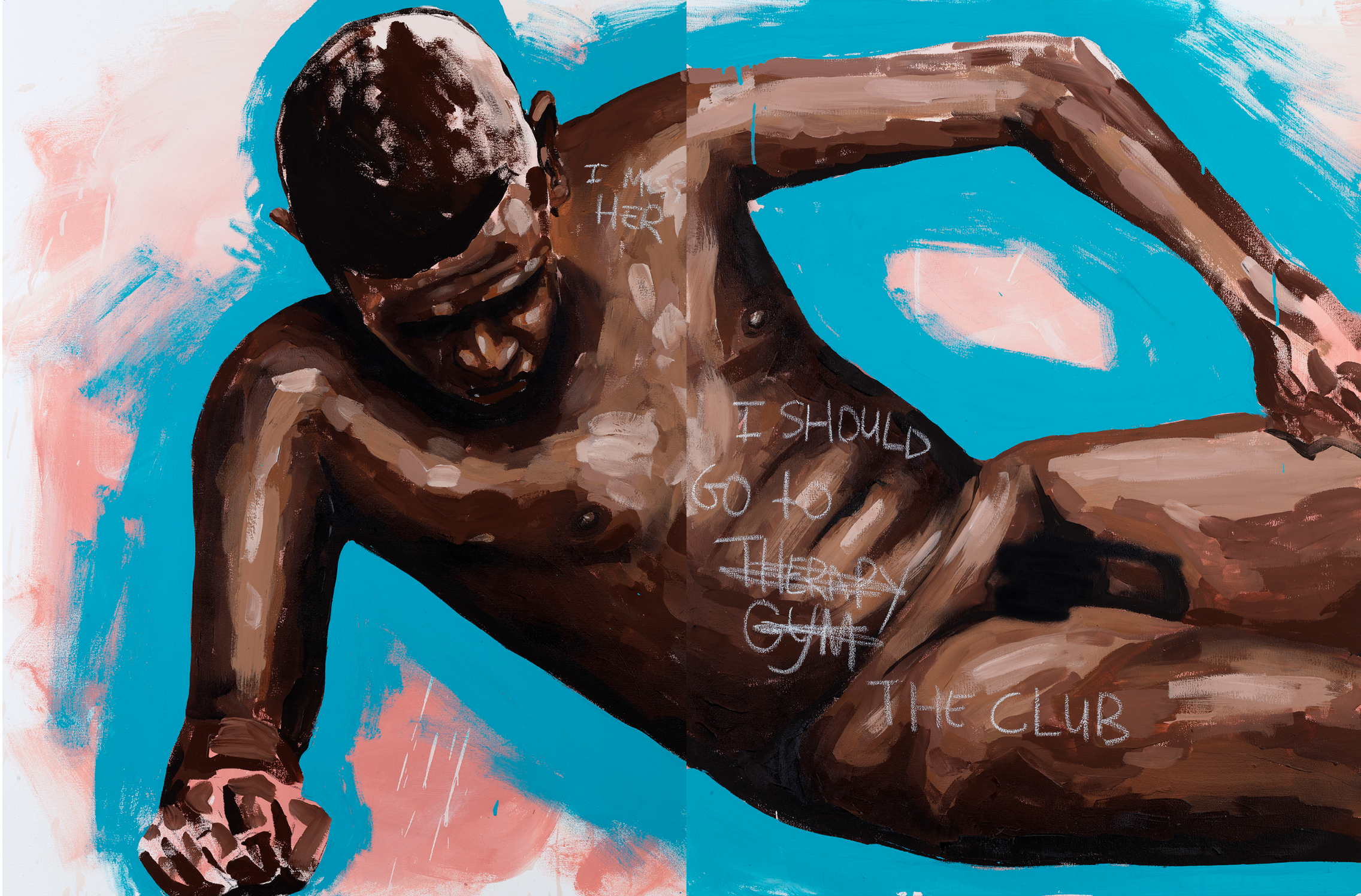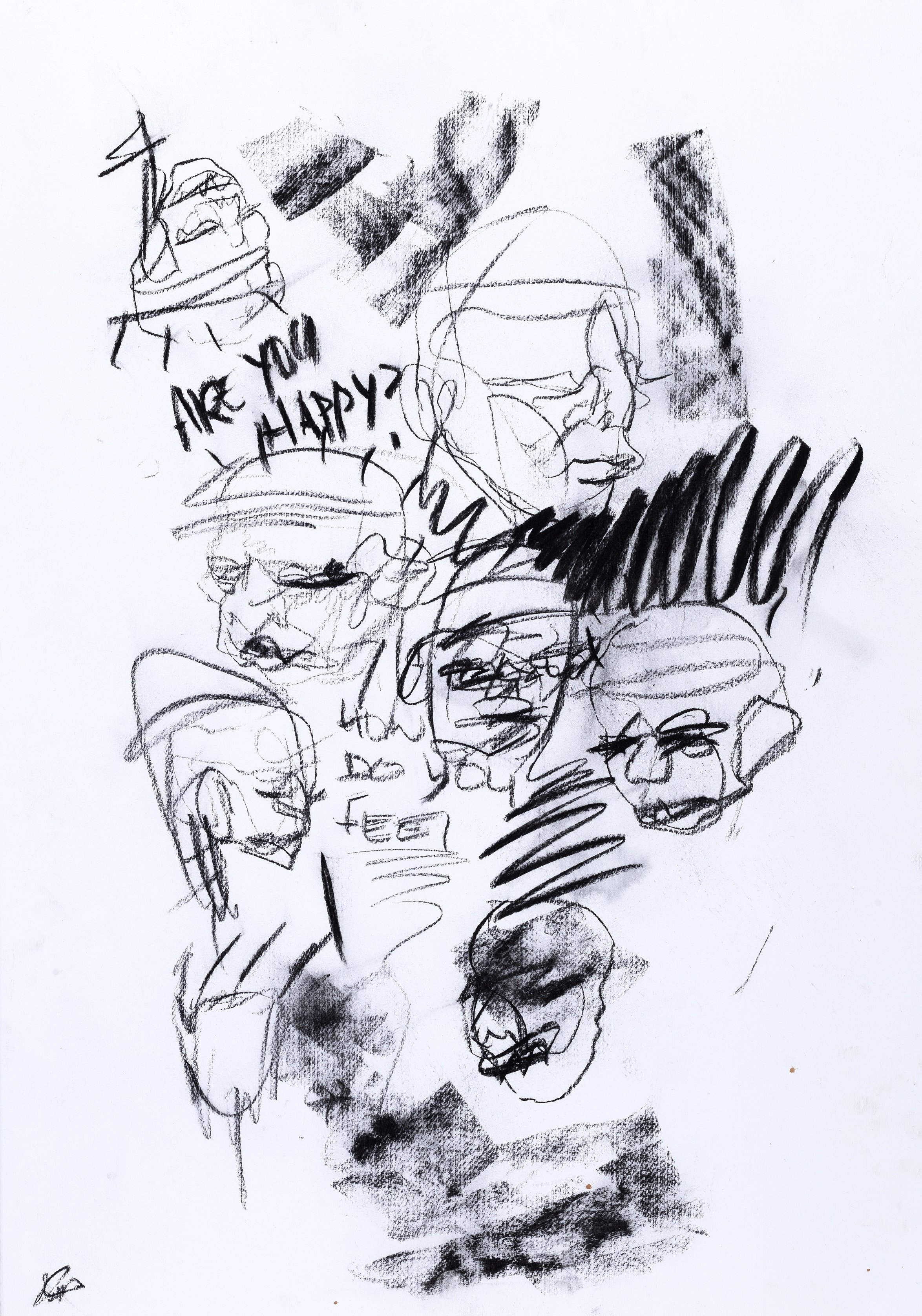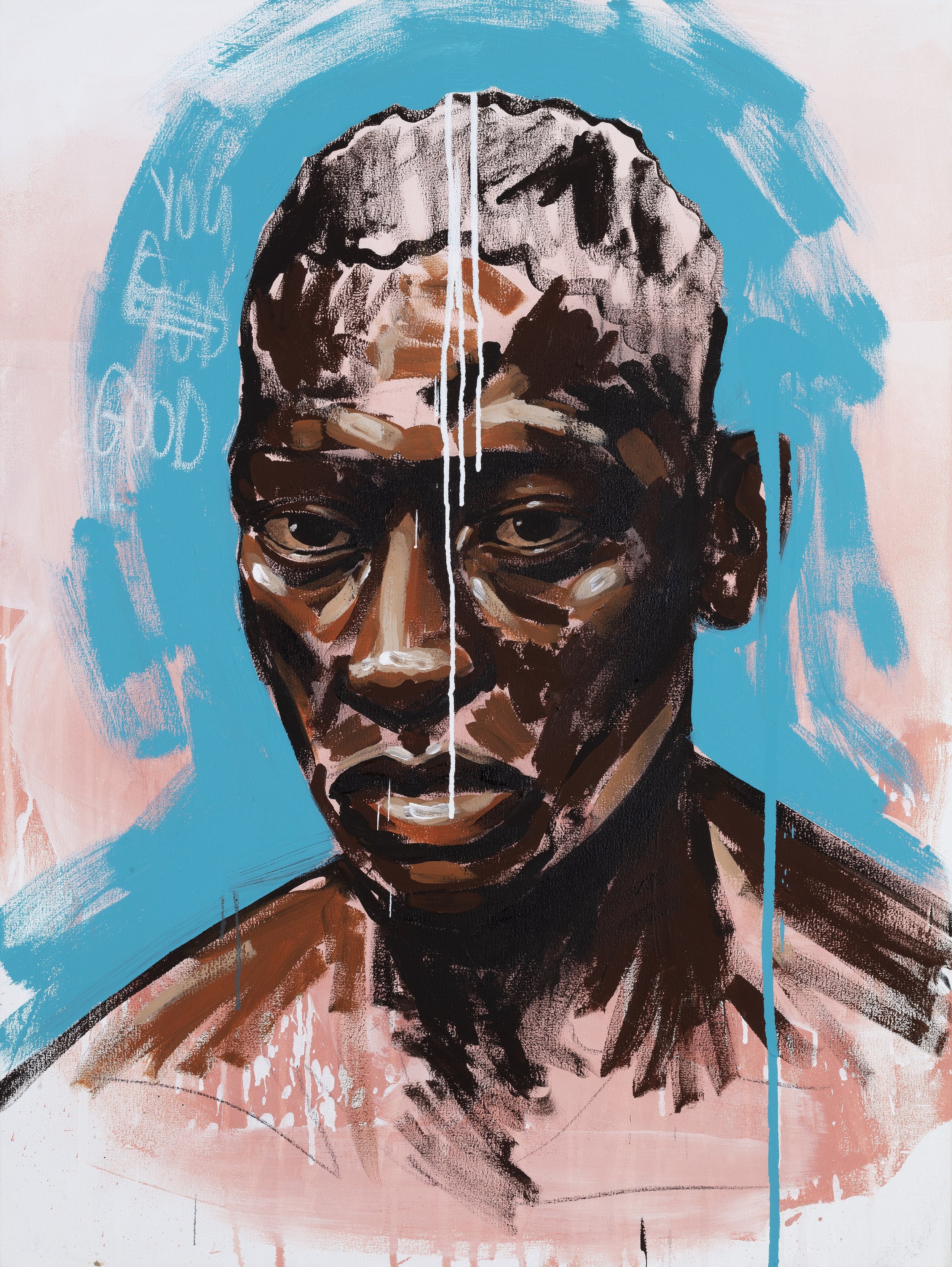Seth Pimentel -
WHY SO BLUE, BROWN BOY?
05.02.22 – 28.02.22
Solo Exhibition at
Kalashnikovv Gallery,
Johannesburg
Artist Statement
For me, this body of work is a continuation of “Ode to Catharsis”, my previous exhibition from 2021, where I focus on the idea and action of cathartic release through the physical creation of new work. In this current mode, I feel like I am taking the next step by really digesting my emotional responses and then externalising them through paint and text.
The premise is to examine and deconstruct the inner workings of my psyche, by having an open dialogue about my mental, sexual and physical state of being. In the context of society, in relation to my heritage and ethnicity, all of which are things I’ve battled to talk about since I could remember.
To fully understand this body of work I have to deconstruct every aspect of the title. The title reveals the hidden layers and meaning of the choice in colour, thematics, and headspace. I also found a poem by Anis Mojgani, titled “For those who can still ride in airplanes” particularly poignant when thinking through these issues.
It’s universally known that the colour “Blue” is associated with a certain sense of melancholy, sadness, woefulness. However, for me, it can be starkly contrasted by its other interpretation in a design context as, calmness, or serenity. Blue is a non-confrontational colour, which highlights an aspect of myself that I dread, my ability to be passive towards certain stimuli, not acknowledging the impact that some situations have on me, to the point where emotion builds up and eventually reaches breaking point. Which I suppose is something taught to me and most young men by their fathers, the masculine role model or archetype. Blue is ingrained in our psyches on a subconscious level, it’s connected to this almost ethereal state, we can’t verbalise our connection to it, but it’s felt collectively. We gaze at the sky and admire deep ocean waters. Colour, and our response to them, is primal.
A strong contrast to that of its warm counterpart, Brown.
The aspect of brown is a commentary on my coloured ethnicity, ( I would say of a collective brown male experience, however, I don’t want to generalise because I have not lived these experiences - this is all based on my subjective outlook) and the societal norm and stereotype that coloured men don’t acknowledge our emotional traumas.
I would say the boy in the context of the show is both myself and my father. We are essentially the focal point. My father firmly believed in the expression of one’s emotions, however, always in the most negative context. Never therapy, or open, vulnerable conversation, but rather substance abuse and passive aggression. Which, as a young man, I’m trying to unlearn by addressing these subconsciously taught responses.
To extend the idea of my heritage, I worked with 4 specific colours and mixed them without measurement to create the various hues in each piece. Each brush stroke is quintessentially unique in form and colour than the other. Every shade of brown is unique to the other. Highlighting this immense, and vast ethnic background that I come from. What I find fascinating about the colour brown is its deeper connotations outside of its racially motivated meaning. To understand our primal response to this colour. Brown is associated with resilience, dependability, security, safety. These are aspects intrinsically linked to my idea, and the societal idea of masculinity, which in itself is relative.
The concept of “Boy” (which is quintessentially the genesis of man, the pre-man, the child, infant, young, naive, impressionable) or masculinity is something I’ve battled with for quite some time in our societal context. Especially in the context of the archaic, understating of ethnicity. As a coloured man, one must exhibit the purest traits of hyper-masculinity (granted every ethnicity experiences this toxic definition), an overbearing sense of strength (exhibited through primal response such as aggression towards others), and a sense of stability, both mental and financial. While separating oneself from their inner turmoil. I understand that I live in a bubble, so my responses to things are contrasted to my peers. Even in our current zeitgeist of progression and expression, this idea is still relevant. But what is a man? How do you define being a “Man”? Even though my sexual encounters and how they play a role in my identification of the “Man”. What defines it?
In the context of Carl Jung’s Anima and Animus, each aspect of Femininity and Masculinity coincide within every human on an unconscious level. So it’s quite Ironic that we disregard our feminine response, which the “archaic man” sees as weak, without realising that it is an integral part of him. This is our disconnect.
As a boy, I was always connected to my mother, I revelled in the comfort of feminine embrace. To the point where it was hard for me to interact with other boys. I feel that young boys are so impressionable to the masculine or feminine energy, which can play a massive role in their interactions with humanity as adults. We need to dismantle the idea that these intrinsic traits of femininity as a man are considered a weakness, or that embracing masculinity in a sexual context is destructive. I want to find that perfect sense of balance between my Anima and Animus.
Dealing with my mental illnesses, it’s hard to navigate this world as a “man”. To be open and vulnerable without judgment or hesitation from lovers and friends. I sat with my thoughts and feelings and came to the realization that the real reason why I am who I am, is because I too need to come to terms with myself, for myself. In a nutshell, the show is a pure cathartic expression, however, it is a calculated catharsis.
Through the deconstruction of the title, I want to elevate the understanding of every piece as not something seen for face value (like an “Ode to Catharsis”) but rather an open multi-layered conversation for anyone that identifies with me/us.
Exhibition Installation View
‘Persona’, 2022, Acrylic, spray paint, charcoal and pastel on canvas, 1000 x 760 x 50mm
‘Sturdy’, 2022, Acrylic, spray paint, charcoal and pastel on canvas, 1000 x 760 x 50mm
'Good posture makes up for lack of structure', 2022, Acrylic, spray paint and charcoal on canvas, 1700mm diameter
Exhibition Installation View
'Limerence', 2022, Acrylic, spray paint and charcoal on canvas, 1700mm diameter
Exhibition Installation View
'Getting out of bed is an achievement’, 2022, Acrylic, spray paint, charcoal and pastel on two canvas panels, 1000 x 1520 x 50mm
'Mumbling on paper', 2022, Charcoal on Fabriano paper, 1000 x 700mm
‘Glancing past’, 2022, Acrylic, spray paint, charcoal and pastel on canvas, 1000 x 760 x 50mm









